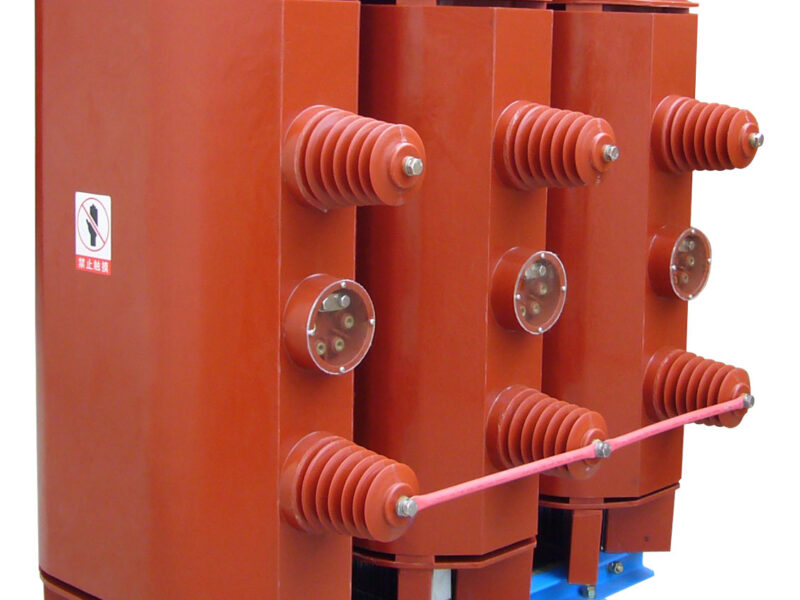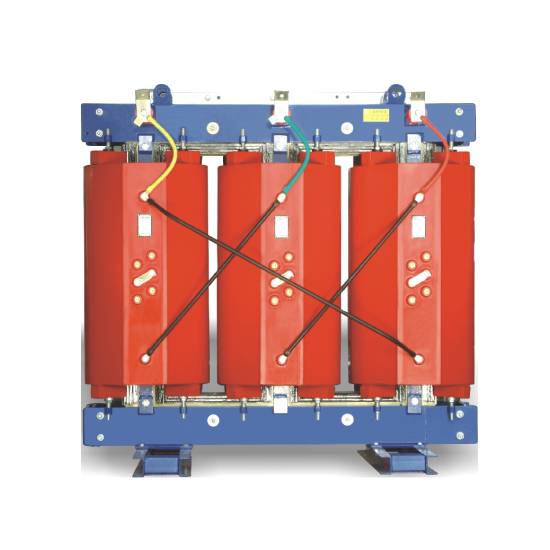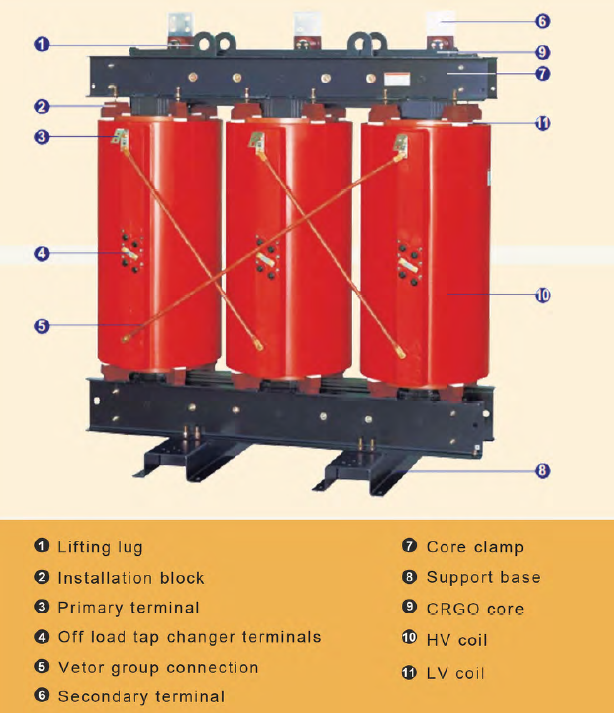
Power Transformers: The Core Equipment in Power Grid Operations
1. Introduction
Power transformers are indispensable components of the power system, playing a crucial role in electricity transmission and distribution. Their primary function is to alter voltage levels to meet different power transmission requirements, enhance system efficiency, and reduce losses. With the growing global demand for electricity and continuous advancements in renewable energy technologies, power transformer technology is also evolving to support more efficient, stable, and intelligent power systems. This article provides a comprehensive overview of the working principles, classifications, applications, technological advancements, and future challenges of power transformers.

2. Working Principle of Power Transformers
A power transformer operates based on the principle of electromagnetic induction. It consists of a core and windings (primary and secondary windings). When an input voltage is applied to the primary winding, it generates a magnetic flux, which is transferred through the core and induces a corresponding voltage in the secondary winding. By adjusting the turn ratio of the windings, the transformer can either step up or step down the voltage to meet the requirements of power transmission.
3. Classification of Power Transformers
Power transformers can be categorized based on various criteria:

(1) By Voltage Level
- High-voltage transformers (110kV and above): Used for long-distance power transmission, improving grid stability.
- Medium-voltage transformers (10kV-110kV): Primarily used in distribution networks, linking high-voltage transmission to low-voltage distribution.
- Low-voltage transformers (below 10kV): Used at the consumer level to provide suitable voltage for end-user equipment.
(2) By Application
- Step-up transformers: Used in power plants to increase generator output voltage, reducing transmission losses.
- Step-down transformers: Used in substations to lower high voltage for industrial, commercial, and residential use.
- Distribution transformers: Used in urban and rural power supply systems, usually small to medium-sized transformers.
- Special transformers: Includes rectifier transformers, furnace transformers, and traction transformers designed for specific applications.
(3) By Insulation Medium
- Oil-immersed transformers: Use insulating oil for cooling and insulation, suitable for high-voltage, high-capacity applications.
- Dry-type transformers: Use epoxy resin or air for insulation, ideal for urban buildings, high-rise structures, and underground facilities.
(4) By Phase Type
- Single-phase transformers: Used in single-phase power supply systems, suitable for homes and small loads.
- Three-phase transformers: Commonly used in industrial and transmission systems, providing stable three-phase power.
-

Transformers
4. Applications of Power Transformers in the Power Grid
(1) Generation Stage
In power generation, electricity is typically produced at low voltage (10-25kV). Step-up transformers raise this voltage to 110kV, 220kV, 500kV, or even higher to reduce transmission losses.
(2) Transmission Stage
High-voltage transmission lines transport electricity over long distances. Ultra-high voltage (UHV) or extra-high voltage (EHV) transformers (750kV, 1000kV) further reduce line losses and improve transmission efficiency.
(3) Distribution Stage
After reaching cities, industrial zones, or rural areas, step-down transformers reduce the voltage to 10kV or 400V to meet the needs of factories, businesses, and residential users.
(4) Integration with Renewable Energy
Wind and solar power plants generate electricity at low voltage, requiring transformers to step up the voltage before integrating with the main grid. As the share of renewable energy increases, transformer adaptability and stability become crucial.
5. Technological Developments in Modern Power Transformers
With technological advancements, power transformers are becoming more efficient, intelligent, and environmentally friendly.
(1) High-Efficiency and Energy-Saving Technologies
- New core materials (such as amorphous alloy cores) reduce no-load losses and improve efficiency.
- Low-loss conductor materials (such as superconductors) minimize copper losses and enhance power transmission efficiency.
(2) Intelligent Transformers
- Equipped with online monitoring systems to track temperature, load, current, voltage, and other parameters in real time, improving operational reliability.
- Integration of IoT and big data analytics optimizes maintenance and enables predictive fault detection.
(3) Environmentally Friendly Transformers
- Use of biodegradable insulating oil to reduce environmental pollution.
- Development of oil-free or low-oil designs, such as gas-insulated transformers, to lower fire risks.
6. Challenges Facing Power Transformers
Despite continuous advancements, power transformers face several challenges:
(1) Upgrading Aging Transformers
Many power grids still operate with outdated transformers that have low efficiency and high failure rates, requiring urgent upgrades.
(2) Stability of Renewable Energy Integration
Renewable energy sources, such as wind and solar, have variable outputs, posing challenges for transformer adaptability in grid integration.
(3) Adaptability to Extreme Environments
Transformers must be designed to function reliably in extreme temperatures, high humidity, and high-altitude conditions.
(4) Cost and Supply Chain Pressures
High-performance transformers require advanced materials and manufacturing techniques, increasing costs. Enhancing production efficiency while controlling costs is a key industry focus.
7. Conclusion
As the core equipment in power grid operations, power transformers play a vital role in generation, transmission, and distribution. With the increasing adoption of smart grids, renewable energy, and rising electricity demand, transformer technology continues to evolve. In the future, high-efficiency, intelligent, and environmentally friendly transformers will become the industry standard, supporting the global transition to more advanced and sustainable power systems. For businesses, investing in innovation, improving product quality, and optimizing maintenance strategies will be key to maintaining a competitive edge in the market.
